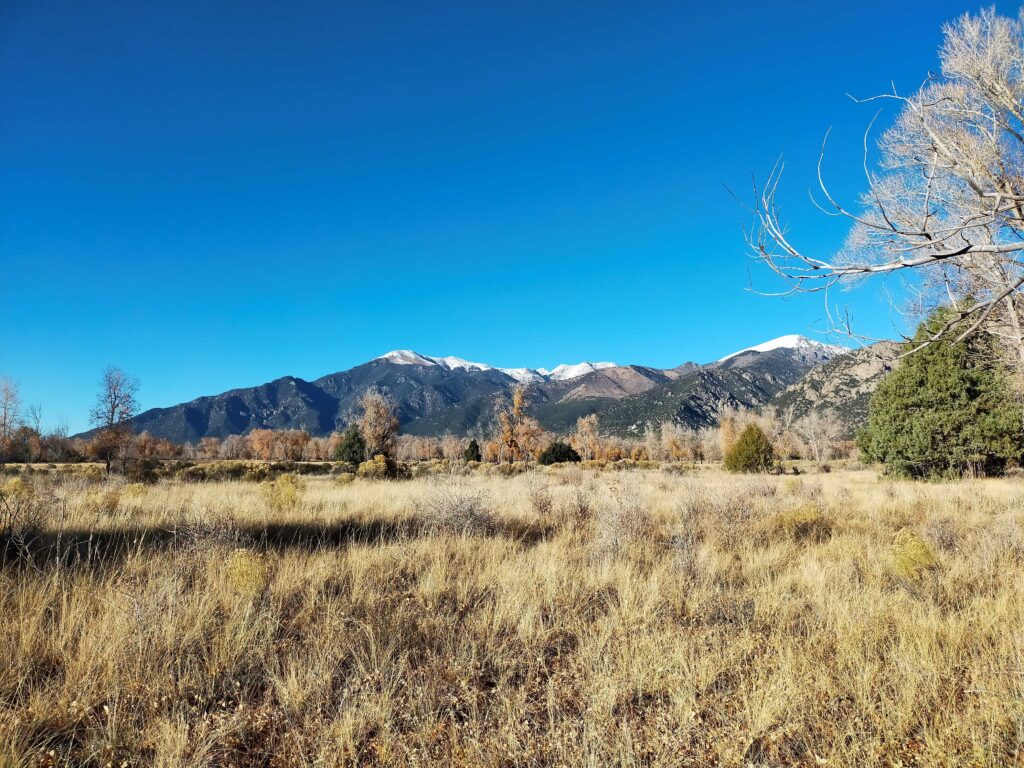
Photo by Konrad Flæte Gundersen
By: Konrad Flæte Gundersen
______________________________________________________________________________
SAN LUIS VALLEY — As climate change turns the southwestern United States hotter and drier, farmers and ranchers struggling for water in Colorado’s low-income San Luis Valley faced a shock this year.
State government officials ordered a shutdown of some of the wells they rely on to pump water from diminishing underground aquifers.
This mandatory shutdown for three months during summer, ordered by the state engineer in the Colorado Department of Natural Resources, targeted wells in one of the irrigation subdistricts that local producers have organized to police themselves and try – unsuccessfully so far, data show – to replenish the aquifers.
The underground water in aquifers is connected to the surface headwaters of the Rio Grande River, which flows from Colorado into drought-stricken New Mexico and Texas. A relatively big mountain snowpack over the winter had promised robust flows through the summer but snow melted earlier than usual as heat led to increased evaporation and dust blown from arid terrain onto snow accelerated melting.
“Mother nature doesn’t seem to be on our side,’’ said Amber Pacheco, deputy general manager of the Rio Grande Water Conservation District, who oversees local irrigators and the subdistricts. “We have a lot of things against us even when we have a good year.’’

Photo by Konrad Flæte Gundersen
The state engineer’s order, largely unnoticed in Colorado’s booming Front Range cities, “had a huge impact on the people living there,’’ Pacheco said.
These wells are important because much of the San Luis Valley’s agriculture relies on aquifers for crop irrigation. If self-policing fails to reduce water pumping sufficiently to replenish water, the state engineer may be forced to take more drastic action unless Rio Grande Water Conservation District officials are able to mobilize farmers to conserve water.
‘’Without a drastic shift in our farmers, we will not survive,’’ Pacheco said. ‘’The valley will become nothing.’’
In the coming decades, roughly 100,000 acres currently used for agriculture will need to stop planting and growing alfalfa, potatoes and other crops, Pacheco said, pointing to data from groundwater monitoring stations and stream flow gauges. That’s about one fifth of the 500,000 acres that have been irrigated for farming and ranching in the San Luis Valley.
Meanwhile, a Front Range company called Renewable Water Resources (RWR) has proposed installation of a pipeline that would siphon 22,000 acre-feet of water a year out of the San Luis Valley to Front Range cities. Specific users of the water have not been identified and Colorado’s U.S. senators and governor have spoken out against RWR’s proposal.
Douglas County leaders south of Denver in 2022 rejected participation in the proposed pipeline project.
But RWR’s website still pushes the pipeline, declaring that “together, we can ensure a bright future for the San Luis Valley.’’ RWR officials have said they’d create a $60 million community fund to support the valley’s economy and spend $68 million purchasing water rights from farmers and ranchers.
‘’Modern technology allows us to reach the water and improve our way of life for generations to come,” RWR officials said in a website posting. ”If we access the billion-acre-foot aquifer two thousand feet below the surface, we can heal the surface water and the shallow aquifer that has been tapped for generations.’’
Pacheco said she’s skeptical of these claims.
‘’Clearly, they are telling lots of lies to people,’’ she said.
Without adequate water to support agriculture, people will be forced to move out of the San Luis Valley, she said.
“Should rural America disappear?’’
The struggle to secure sufficient water and use it sustainably here reflects challenges exacerbated by climate change and aridification a cross the southwestern United States. A long tradition of farming and ranching in the San Luis Valley dates back hundreds of years before the United States and Mexico existed. Early settlers at the north edge of the Spanish empire established a culture that revolves around water allocated using locally run communal “acequia” ditches, and local leaders reject the buying and selling of water as a commercial commodity, especially if that leads to a trans basin diversion of water.
“Most newcomers come in with the notion that land and water are a commodity. Water is not a commodity,’’ said San Luis Valley Land Rights council founder Shirley Romero Otero, an activist and educator, at a recent community gathering in San Luis, the oldest town in Colorado.
San Luis traditions for managing water use sustainably through acequias have great cultural significance for residents and must continue, Otero said, accusing outsiders who would “take” the water that locals consider sacred.
“We have a community that has been diligent in keeping our water, our traditions and our way of life,’’ Otero said. “We will fight tooth and nail.’’


